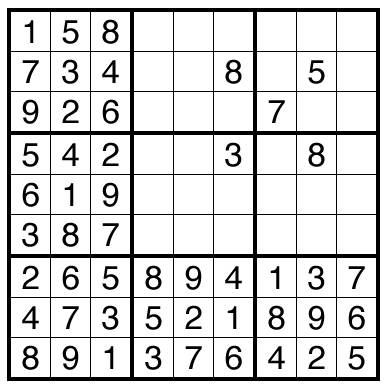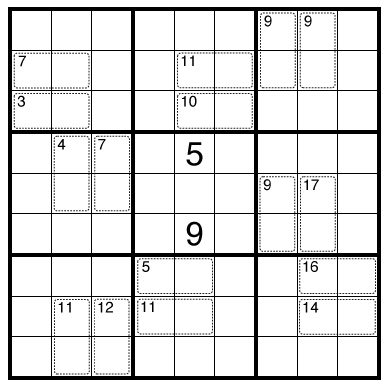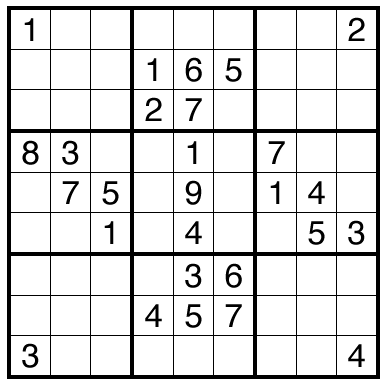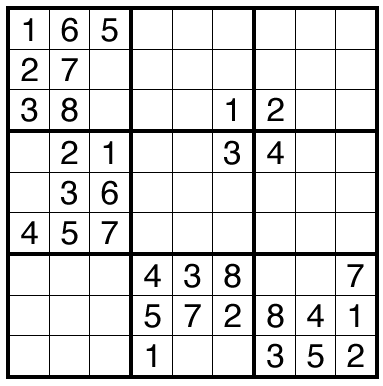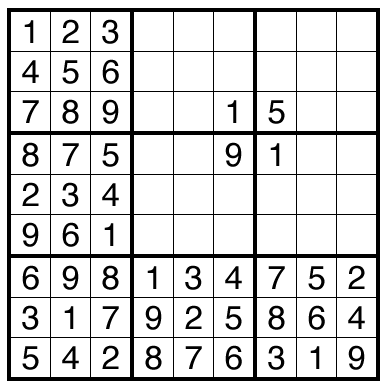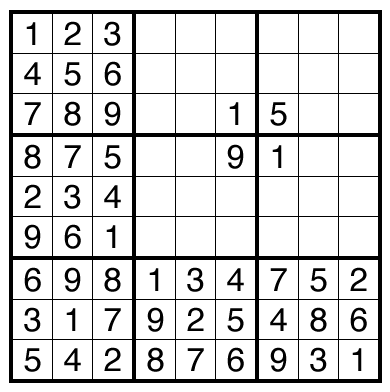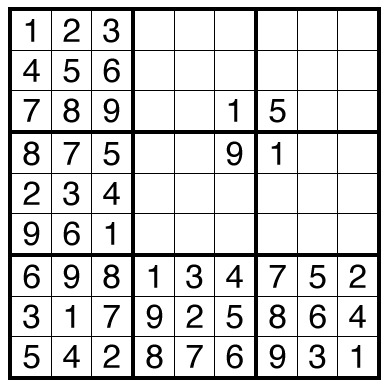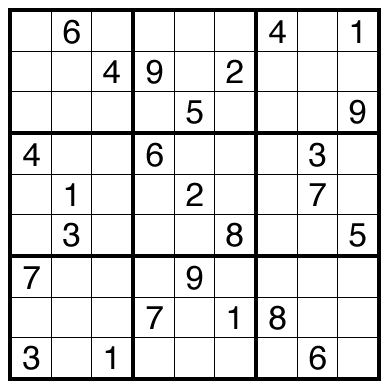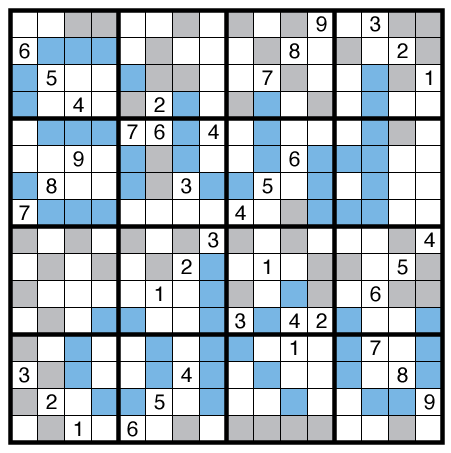Mini-Sudoku by Thomas Snyder
(This post is part of: “A Story of Self-setting Sudoku”.)
Our recent experiments with Sudoku generation included many ideas for faster game experiences like this Mini-Sudoku with 4 regions to go. We’re still testing how to automatically package sets of these puzzles together for the mass market.
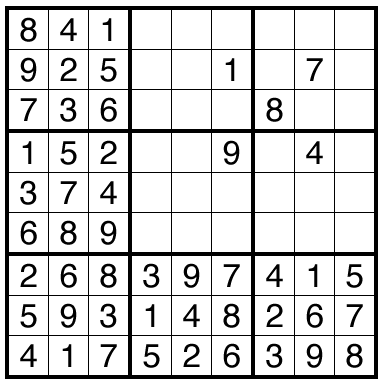
or solve online (using SudokuPad)
Theme: Another Atypical Solve?
Author/Opus: This is the 598th puzzle from Thomas Snyder.
Rules: Insert a number from 1 to 9 into each white cell so that no number repeats in any row, column, or bold region.
Difficulty (highlight to view): 2 stars
Time Standards (highlight to view): Grandmaster = 1:30, Master = 2:00, Expert = 4:00
Solution: PDF
Note: Follow this link for classic Sudoku. If you are new to this puzzle type, here are our easiest Sudoku to get started on. More classic Sudoku puzzles can be found in The Art of Sudoku, The Art of Sudoku 2 and in our beginner-friendly collection Intro to GMPuzzles by Serkan Yürekli.
Note 2: Comments on the blog are great! For a more interactive discussion, please also consider using our Twelve Months of Sudoku? post on the GMPuzzles Discord. Not a member of the Discord? Click this link for basic access.

